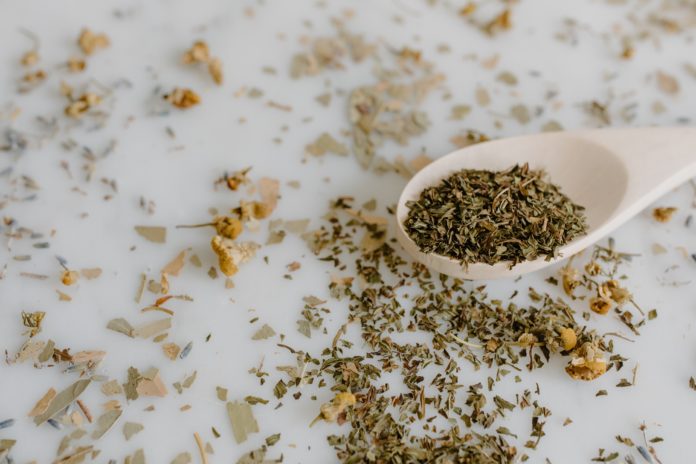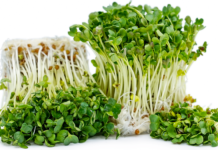Aromatic, earthy, and versatile spice, cumin is an essential ingredient in any cook’s pantry. Whether it is hummus, curry, or a pot of chili, cumin is a part of them all. So when you realize that you are out of cumin in your pantry, the panic is real. Do not worry; we have listed the seven best substitute for cumin in this post. All these replacement sices for cumin are have been hiding in your spice rank for so long; it’s time to put them to good use.
What Is Cumin?
Cumin is a spice extracted from dried cumin plant seeds. The cumin plant is a member of the parsley family and native to Southwestern Asia and the Middle East, making this spice widely popular in these regions.
Cumin is available in powdered as well as whole seeds form and can be found at any grocery store. It is yellowish-brown in color and tastes smoky, nutty, earthy, and bittersweet. Cumin pairs well with earthy spices like coriander, cinnamon, and chilies. It is popularly included spice in any store-bought spice blends like curry powder, chili powder, and garam masala.
If you have run out of cumin in your kitchen, try these seven substitute ingredients for cumin seeds and powder.
Substitute for Cumin Seeds and Powder
Whole coriander or ground coriander.
Coriander is a seed extracted from the cilantro plant, which is also a member of the pair and has a similar lemony, right and earthy flavor; however, coriander is a bit milder in terms of heat and smokiness. To use it as a replacement for cumin, use about half the amount for coriander.
Caraway seeds
Caraway seeds and cumin seeds look identical. Also, the taste of both these parsley family spices is very similar but not as strong as cumin. You can use caraway seeds to substitute for cumin in your recipe.
Fennel seeds
Another popular replacement for cumin seeds is fennel. It can be used as a substitute for cumin in desperate need. However, fennel seeds tend to have more licorice flavor, so remember the overall flavor profile of your dish before using them. Fennel is not as earthy and smoky as cumin, so instead, you can opt-out for the other mentioned substitute.
Garam masala
This is a popularly used blend of South African and Indian spice, and the exact blend varies from brand to brand, but cumin is a part of them all. When using garam masala to substitute for cumin, start with half the amount you would for cumin and then adjust as needed.
Curry powder
Curry powder like garam masala contains cumin, so it can make a good substitute for cumin powder. Although it also contains a mix of other spices and flavors as well, so consider what dish you are making in order to use it. Curry powder is a popular ingredient in Southeast Asian dishes. Remember that it will give a bright yellow color to your dish because it contains turmeric.
Chili powder
Chili powder sometimes contains cumin, oregano, and garlic powder. Remember that it will add heat and spice to your dish, so use a small amount of chilli to replace the cumin.
Paprika
Paprika, like cumin, has an earthy and smoky flavour. However, it does not have citrusy, so use it in small amounts and then adjust as per need. Similar to curry powder, it adds colour to food when used in large quantities but is red instead of yellow.
How to use cumin seeds?
Cumin seeds are a versatile spice that can enhance the flavour of a variety of dishes. Here’s how to use cumin seeds effectively in your cooking:
1. Toasting Cumin Seeds
- Why: Toasting cumin seeds enhances their flavour and aroma.
- How:
- Place the seeds in a dry skillet over medium heat.
- Stir frequently for about 2-3 minutes until they become fragrant and slightly darker in colour.
- Let them cool before grinding if desired.
2. Using Whole Cumin Seeds
- In Curries and Stews: Add whole cumin seeds to hot oil at the beginning of cooking to infuse the oil with flavor.
- In Rice Dishes: Add a teaspoon of whole cumin seeds to the cooking water for rice or quinoa to add a warm, earthy flavor.
- In Pickles: Incorporate whole cumin seeds into vegetable pickles for added spice.
3. Ground Cumin
- In Spice Blends: Use ground cumin in spice mixes like curry powder, garam masala, or taco seasoning.
- In Marinades: Add ground cumin to marinades for meats, fish, or vegetables to impart a warm, spicy flavor.
- In Soups and Sauces: Stir in ground cumin while cooking soups, stews, or sauces for an extra layer of flavor.
4. Baking
- In Bread: Mix ground cumin into bread dough for a unique twist on traditional bread.
- In Biscuits and Crackers: Add ground cumin to savoury baked goods for enhanced flavour.
5. Infusing Oils and Dressings
- Infused Oil: Heat oil with cumin seeds to create a flavoured oil for drizzling over dishes or for use in dressings.
- Dressings: Incorporate ground cumin into vinaigrettes or creamy dressings for salads to add depth.
6. Health Benefits
- Digestive Aid: Cumin is known for its digestive benefits. Consider adding it to dishes for both flavour and health.
- Antioxidant Properties: Cumin contains antioxidants, which can be beneficial to overall health.
Tips for Storage
- Store cumin seeds in an airtight container in a cool, dark place to preserve their flavor. Ground cumin loses its potency faster, so it’s best to store it in a similar way and use it within a few months for optimal flavour.
Cooking Tip
- When substituting ground cumin for whole seeds, use one teaspoon of ground cumin for every teaspoon of whole cumin seeds, as the flavor intensity differs.
Incorporating cumin seeds into your cooking not only enhances flavor but also provides numerous health benefits. Enjoy experimenting with this aromatic spice!
A Final Note
While the above-listed substitute for cumin seeds and powder will not give the dish’s exact flavor profile, caraway and coriander come to the closest; chili and curry powder contains cumin but can add spice and color to your dish.

















